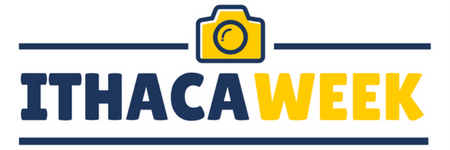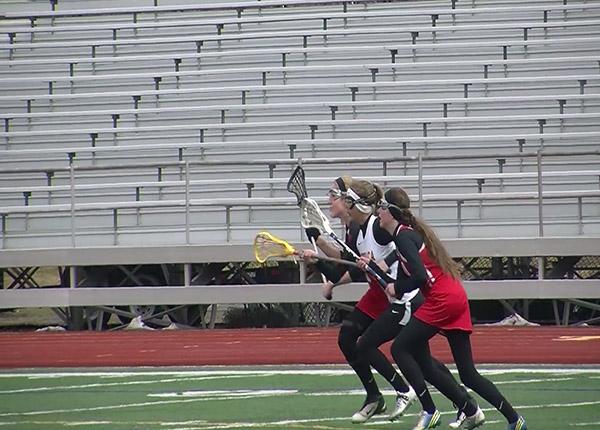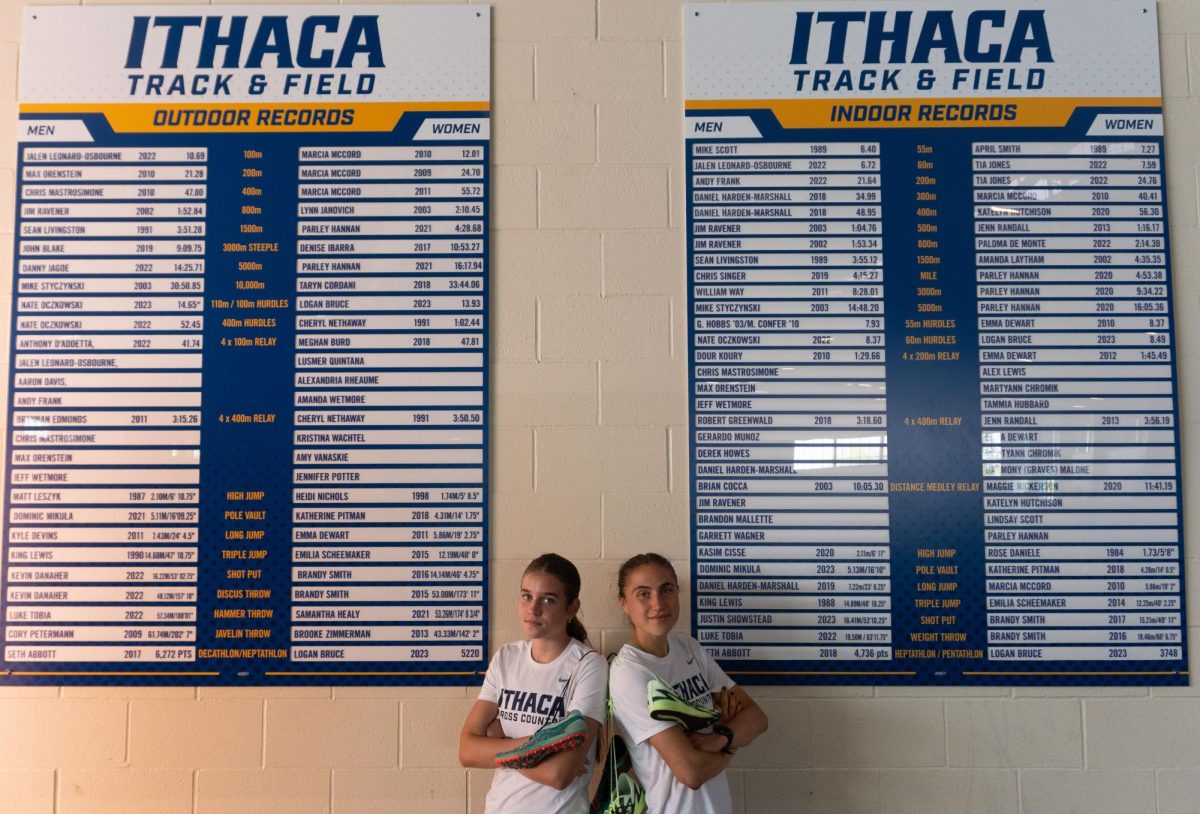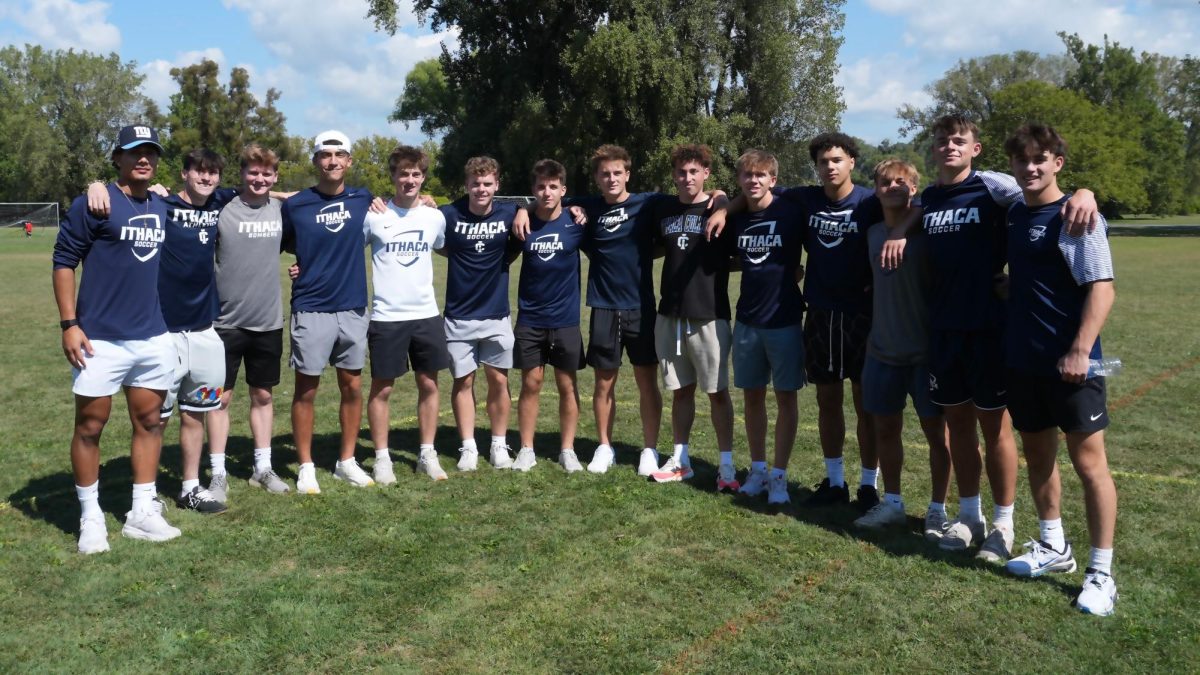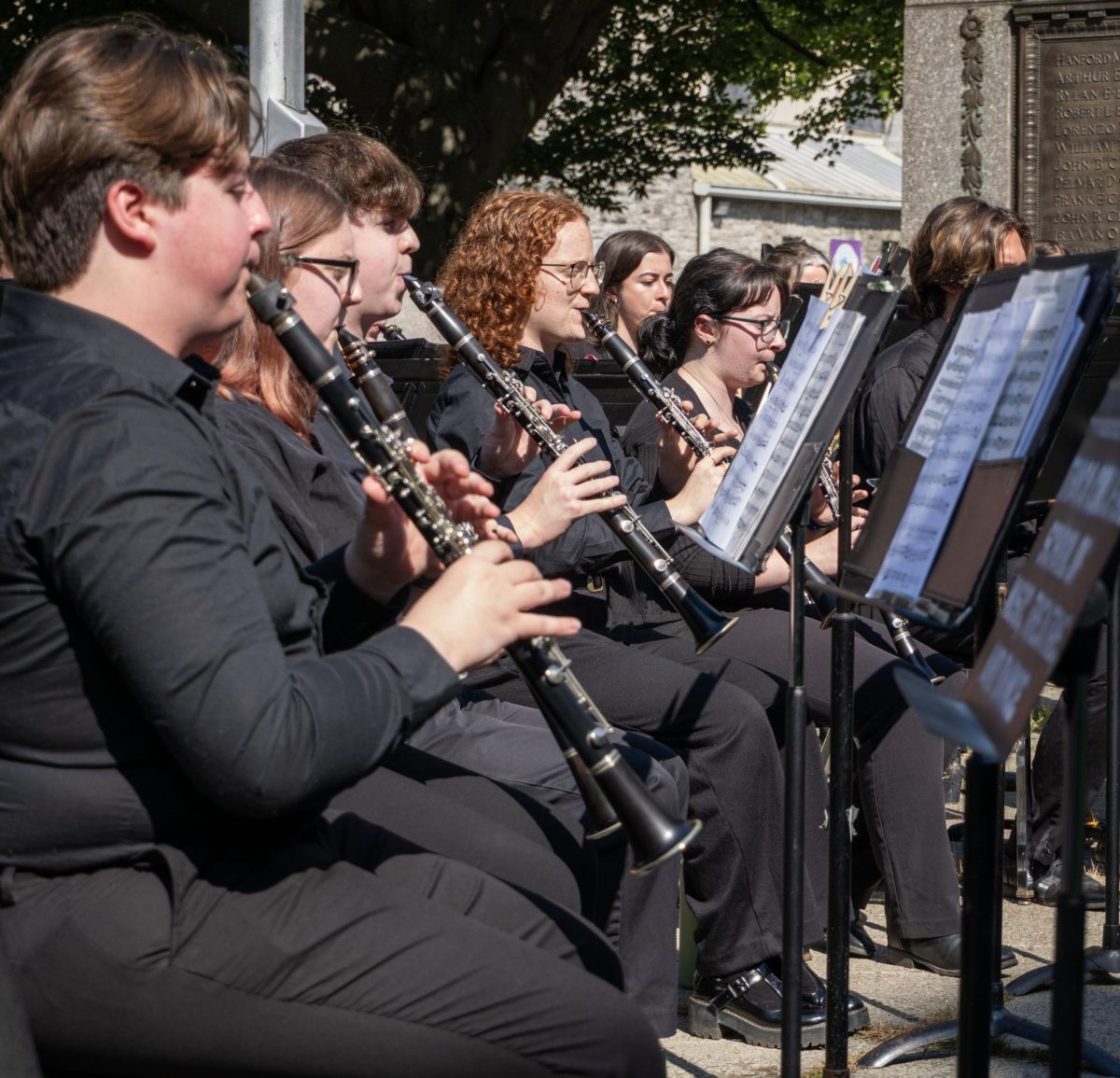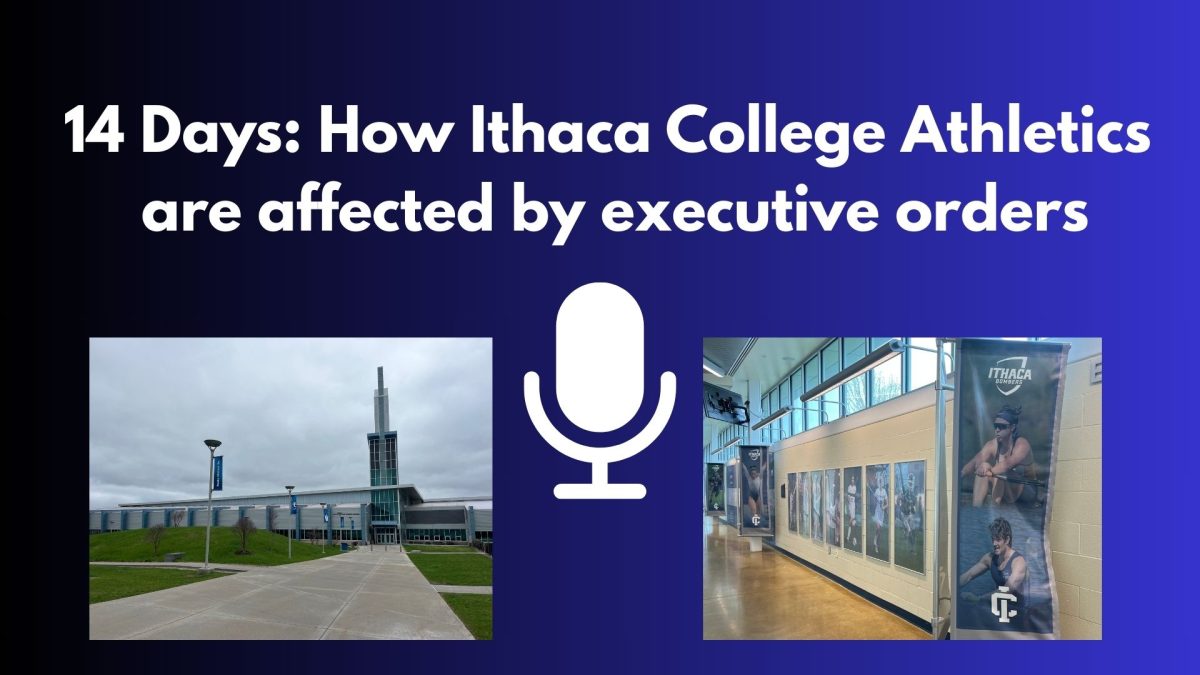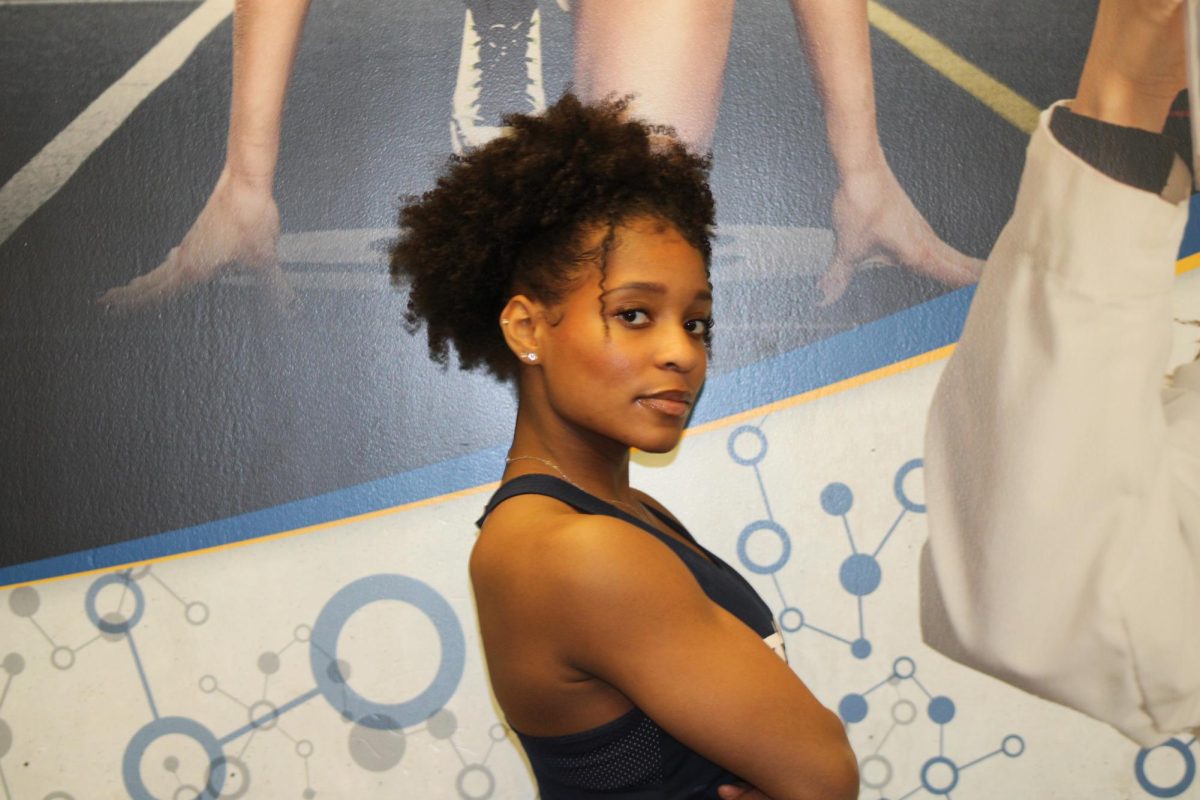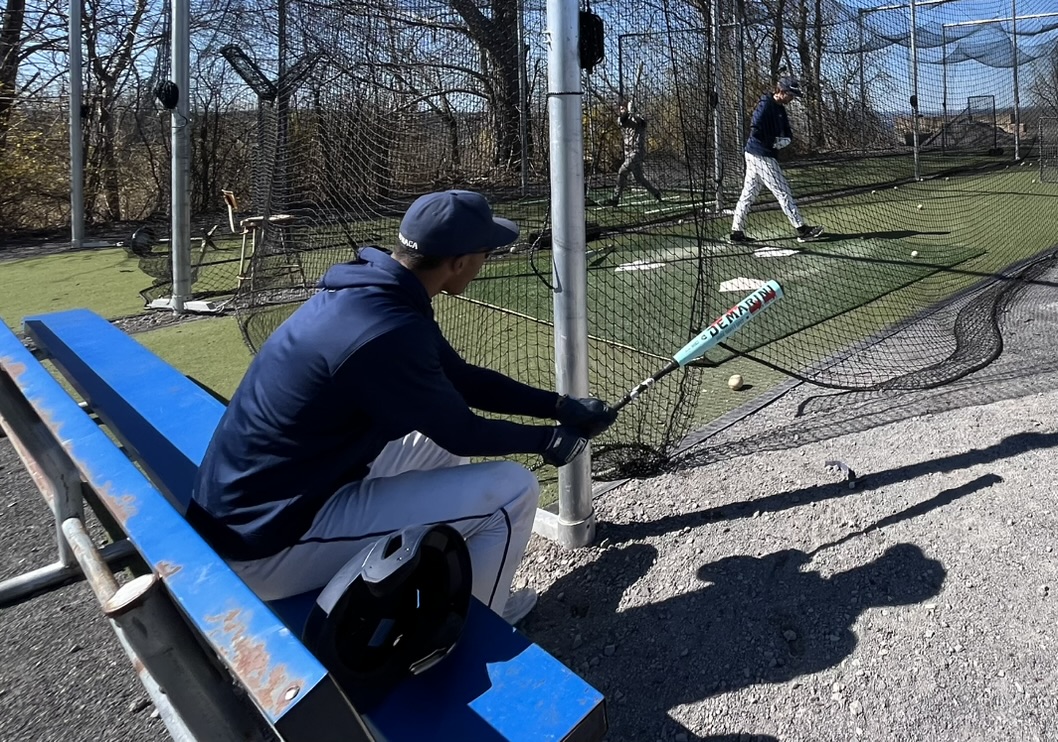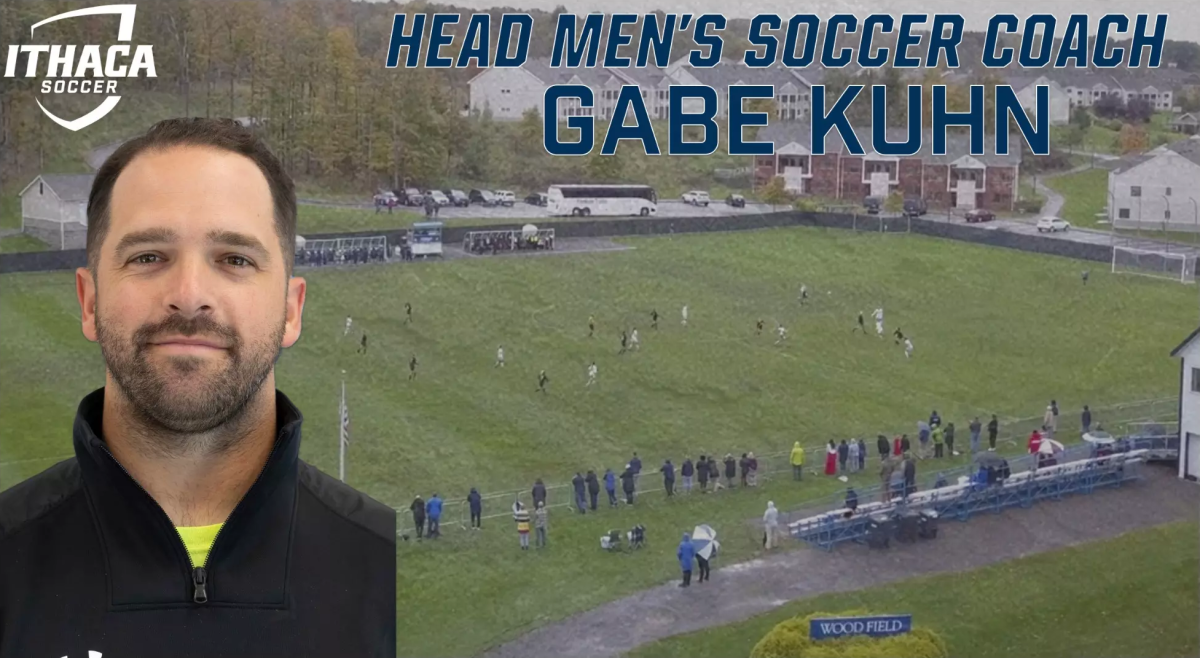McCarthy was diagnosed with a concussion soon after, and missed two weeks of hockey and lacrosse.
“It started out with not doing anything,” McCarthy said. “I had to stay home, and not read or look at any electronics. Then I slowly got back into athletics and working my way back into practice.”
A sophomore at Ithaca High School, McCarthy is one of the 300,000 people in the United States who suffer sports-related traumatic brain injuries annually. Among high school students, concussions make up 8.9 percent of all athletic injuries, according to the National Library of Medicine.
Within the realm of concussion research, there is little knowledge of how many concussions are too many, said Kim Bailey, Ithaca High School Athletic Trainer. She also said that concussion recovery is individual, and all head injuries are generally treated the same.
“Concussions are very bizarre and interesting, and we just have no idea what we are doing just yet,” Bailey said. “We just manage them as conservatively as we can.”
[topswf swf=’https://www.ithacaweek-ic.com/wp-content/uploads/2015/04/Rizzo-Adelbock-Concussions.swf’ width=’550′ height=’400′ quality=’best’ wmode=’transparent’ scale=’default’ flashvars=” allowfullscreen=’false’]
A 2015 study by the American Academy of Pediatrics investigated the effects of strict rest as a treatment for acute concussions, and found no additional benefits when compared to those of the usual treatment plan.
This treatment plan generally includes rest, the gradual inclusion of school and daily activities, and eventually a return to the sport, said Dr. Amy MacQueen, a Primary Care Sports Medicine Physician at Cayuga Medical Center.
There is, however, a significant, often fatal, risk for children and adolescents who do not follow this course of treatment, Dr. MacQueen said.
“Something we do worry about with concussions is something called second impact syndrome, where someone has a head injury and then continues to participate and then another injury can be catastrophic,” she said. “It can cause the brain to swell and herniate and kill the person.”
The lasting impact of a concussion varies greatly, Bailey said. Recovery times can be 7-10 days, several weeks or even several years.
“What’s interesting about severity is that you don’t know how severe it is until its resolved,” Bailey said. “We don’t grade them anymore.”
Ithaca High School has increased its proactivity when it comes to preventing the delayed diagnosis of concussions, said Ithaca Girls Lacrosse Coach Lynn Reitenbach. This includes a computerized test for every athlete, which measures response time and other neurological functions at the beginning of each sports season.
“Everyone gets a baseline before the season starts, so should they have a head injury we have that to start with,” Reitenbach said. “I think it’s safe to say we are incredibly vigilant about the concussion situation.”
While the research on the impact of concussions has been influencing youth sports programs nationwide, there are still gains to be made, Dr. MacQueen said.
“There is thankfully more and more research,” she said. “I think when it comes to children there has not been as much research as we would like to see.”
Many organizations have contributed funds for concussion research. This includes $55 million from the NCAA in 2014 and $30 million from the NFL in 2013.
At the beginning of a day-long summit at the White House last May, President Barack Obama called for an increase in youth concussion research to a crowd of people involved in youth sports.
“There’s a public health interest in people participating in sports,” Obama said. “I’d be much more troubled if young people shied away from sports.”
While the facts on youth concussion diagnosis and treatment remain to be clarified, the best method to prevent serious sports-related head trauma is to pull an athlete out of the
game at the sign of any concussion symptoms, Dr. Macqueen said.
“There is no product to buy,” she said. “There is no headband to buy. There is no special mouth guard. There is no special helmet that has been proven to decrease the risk of concussions. So I think that by far the most important thing to do is educated people, and if someone has a hit and they are not feeling well, the safest thing it to sit them out.”
Having followed her recommended treatment plan, McCarthy is now fully recovered and is playing goalie for the Ithaca High School girls lacrosse team. After recovering from her concussion, she said she was worried about the risks of having another.
“I was excited to be back, so I was going for it, but I was also nervous about hitting my head,” she said. “I’ve heard that it’s more likely to get them the more you get them.”
